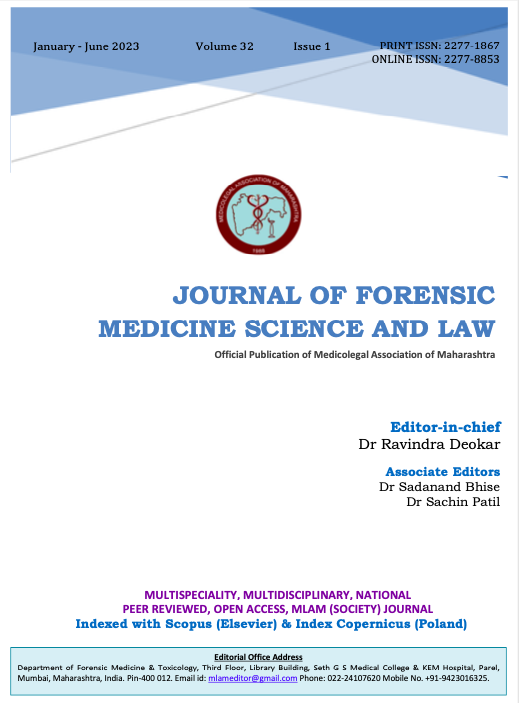Authors |
Ashish Salankar, Rahul Ramteke, Pankaj N Murkey, Sumeet Shende, Nitin Barmate |
Abstract |
Background: Head Injury is a morbid state, resulting from gross or subtle structural changes in the scalp, skull and/or the contents of the skull, produced by mechanical forces. Trauma is one of the leading preventable causes of death in developing countries, and is a major health and social problem. Material and Methods: The study has been conducted during the period 1st August 2013 to 31st August 2015. During this period, total 146 cases of fatal head injuries with intracranial traumas were studied. Results: In the present study, out of 146 cases of fatal head injury, 118 were male and 28 were female. Male, female sex ratio is 4.21:1. Of which 100 cases were of RTA (68.49%), followed by Railway accidents 26 cases (17.80%). Conclusion: Fracture of vault of skull (n= 83; 56.84%); was maximum as compared to base of skull in 36 (24.65%) cases. Subgaleal Haemorrhage was observed in 131 (89.73%) cases. Subarachnoid Haemorrhage in 115 cases (78.77%) was most commonly intracranial Haemorrhage. Recommendations: Fatal head injuries can be prevented by implementing sufficient road safety measures, working at heights while wearing safety equipment. Using safety gates and childproofing your home will prevent children from accessing dangerous areas like stairs. |
















